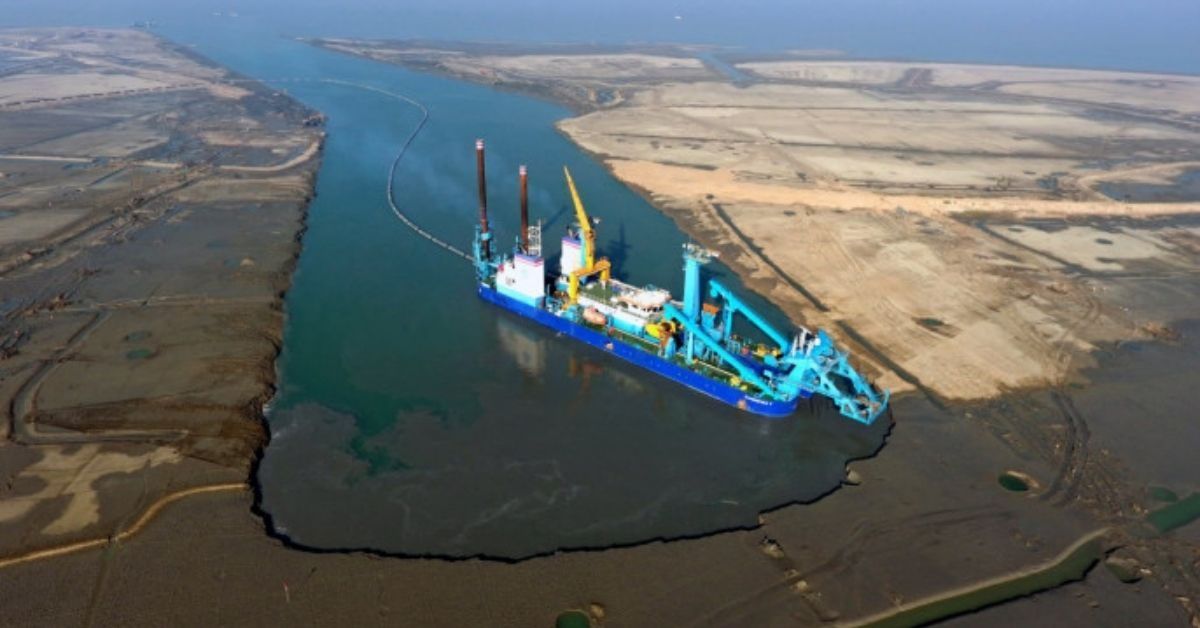Officials say building on the Matarbari deep-sea-port project may figure high during Prime Minister Sheikh Hasina’s upcoming Tokyo tour.
Not only India, some other neighbouring countries will be allowed trans-shipment through the Matarbari deep-sea port, policymakers told the FE.
The port, which is being built by Japan, will be a “game changer for regional connectivity”, Foreign Minister Dr AK Abdul Momen told the FE.
Referring to recent reports that Japan and Northeast Indian states are banking on this port for boosting trade and investment in this region, the minister said not only India, other countries may be offered the transhipment facility through this port.
The final decision in this regard, however, has to come from the shipping ministry.
“Under the Big B programme they are doing a lot of works and they are working hard,” the foreign minister said, striking a high note of hope that the maritime Matarbari area will be another Singapore in future.
Japan has long mulled over creating a single economic zone comprising Bangladesh, Northeastern Indian states, Bhutan, Nepal and other countries in the South Asian region for several years. Recently, at a conference in Agartala, the capital of India’s Northeastern State of Tripura, Japanese Ambassador in India proposed development of an industrial hub in Bangladesh centring the Matarbari deep-sea port.
State Minister for Foreign Affairs Shahriar Alam told the same meeting that the Japanese initiative would boost India-Bangladesh trade and help bring in Japanese and other foreign investment.
The proposed trade hub in Bangladesh will have supply chains to the landlocked north-eastern states of India, and to Nepal and Bhutan beyond, through developing a port and transport in the region, Japanese officials said.
During his recent India visit, Japanese Prime Minister Fumio Kishida also tabled the idea of a new industrial hub for the Bay of Bengal and northeast India that could bolster development in the impoverished region of 300 million people, reports said.
Recently, Japan approved $1.27 billion in funding to Bangladesh for three infrastructure projects – including a new commercial port in the Matarbari area with links to adjacent landlocked Indian states, including Tripura, and wider international markets.
Japanese foreign ministry officials said the deep-sea port, likely to become operational by 2027, would be a key to building an industrial hub connecting Bangladesh to landlocked areas of India.
Matarbari would be Bangladesh’s first deep-sea port capable of hosting large vessels—in an end to detour of big-hull ships through region’s deep-draft ports.
Tripura state is about 100 kilometres from Matarbari seaport, and can be the gateway for region’s external trade.
India and Japan have jointly developed infrastructure projects across Bangladesh, Sri Lanka and Africa as an alternative to China’s multibillion-dollar Belt and Road Initiative or BRI in order to counter fast-spreading Chinese orbit of influence.
Foreign relations analysts say Japan has been working closely with India to support the development of the northeastern region through the India-Japan Act East Forum.
The plan involves adjusting tariffs, boosting connectivity, jointly courting investment, particularly from Japanese enterprises, and binding India closer to countries on the Mekong River system, such as Myanmar, Laos, Thailand, Cambodia, and Vietnam.
“But it will be impossible to connect northeastern region with mainland India without Bangladesh, and Japan will not also be able to get closer to India’s northeast sans connectivity over Bangladesh,” says a unanimous view of analysts.








